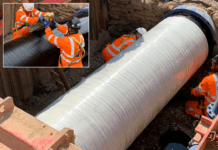
By Matt Hale, International Sales & Marketing Director, HRS Heat Exchangers
Thermal hydrolysis is a two-stage process combining high-pressure heat treatment of the feedstock followed by rapid decompression. This breaks apart the chemical bonds in the lignocellulosic material, improving biodegradability and allowing the organisms responsible for anaerobic digestion to act on a greater surface area of material (therefore allowing higher loading rates or shorter retention times). In the case of manures and sewage sludges, the high temperatures involved also sterilise the feedstock, destroying any pathogens which may be present and opening up more options for the resulting digestate, such as its use as a high-quality biofertiliser.
The benefits of thermal hydrolysis include a reduction in the overall ratio of volatile solids and improvements in the conversion rate of total organic carbon. The higher volatile solid content of sludge fed into the digestion system, and the higher degradation rate attained, cause higher biogas production compared to feedstock which has not been pre-treated.
HRS has developed a patented process for the continuous thermal hydrolysis of digester sludge using the Unicus Series of scraped surface heat exchangers. This involves heating the sludge to 160-170°C. HRS offers patented processes for thermal hydrolysis both with and without steam explosion. Unlike some other systems, both are based around a continuous process using scraped surface heat exchangers to avoid fouling, allowing more efficient production. Furthermore, the systems incorporate energy recovery to provide a significant cost reduction during operation, and the technology can be retrofitted to existing installations in order to improve their output.







